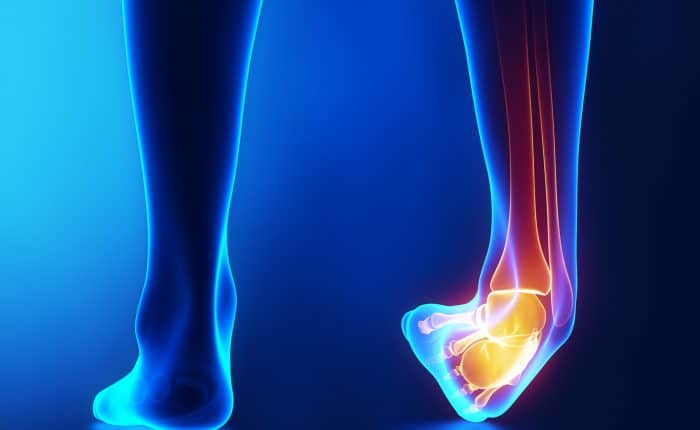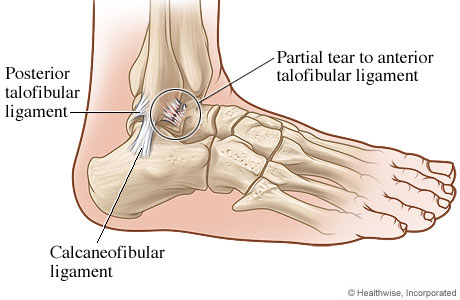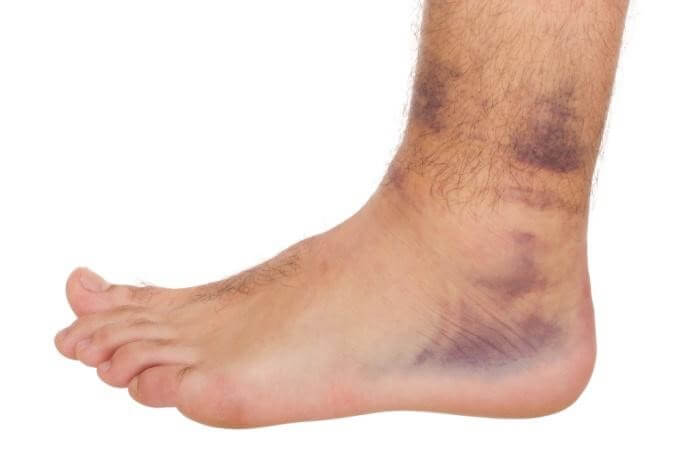Chronic Ankle Instability – What is it? And what should you do about it?
 Have you had an ankle sprain where it has never felt right ever since- whether it is a feeling of constant wobbliness or intermittent pain?
Have you had an ankle sprain where it has never felt right ever since- whether it is a feeling of constant wobbliness or intermittent pain?
Or perhaps you find yourself always rolling your ankle, feeling as if it is going to give way?
You may have chronic ankle instability (CAI).
Chronic ankle instability (CAI) is a condition that is characterised by:
- repetitive episodes or sensation of the ankle giving way,
- ongoing symptoms like pain, weakness,
- reduced mobility in, and around the foot and ankle;
- reduced perceived function, and
- recurrent ankle sprains that last for more than a year after the initial injury.
 CAI is developed following an initial lateral ankle sprain “rolled ankle” which causes strain or disruption to the ligaments to the side of the ankle joint. Ligaments are bands of tissue that connect bone to bone to provide support to your joints and limit excessive movements. The most common ligaments being injured include ATFL (anterior tibiofibular ligament) and CFL (calcanofibular ligament). It has been estimated that up to 40% of people with a first time ankle sprain (lateral ankle sprain) develops CAI.
CAI is developed following an initial lateral ankle sprain “rolled ankle” which causes strain or disruption to the ligaments to the side of the ankle joint. Ligaments are bands of tissue that connect bone to bone to provide support to your joints and limit excessive movements. The most common ligaments being injured include ATFL (anterior tibiofibular ligament) and CFL (calcanofibular ligament). It has been estimated that up to 40% of people with a first time ankle sprain (lateral ankle sprain) develops CAI.
So, perhaps a “simple” ankle sprain isn’t as simple as just resting, icing and letting it get better as you may have thought.
Multiple factors contribute to the development of CAI.
These include the injured tissue from the initial injury, which can cause structural changes to the ankle joint (e.g. residual ligament laxity, ankle joint restriction, subsequent over-stretching of the surrounding ankle muscles).
The initial ankle sprain can also cause changes in proprioception (e.g. altered sense of joint position causing the person to weight bear more on the outer edge of their ankle) and maladaptive movement behaviours, such as unloading the injured side which causes consequent muscular weakness through not only at the ankle joints but also knee and hip muscle of the same side.
Researchers also believe that there are environmental and personal actors that can contribute to the development of chronic ankle instability, such as access to healthcare to rehabilitate the initial ankle sprain and past injuries, respectively.
Fortunately, CAI is treatable.
The mainstay treatment for it is physiotherapy.
 As CAI may present differently to each individual, your physiotherapist need to first conduct a thorough examination of your past injury and medical history, and examine your foot and ankle through various clinical and functional testings to identify factors that contribute to your CAI. This allows your physiotherapist to direct a treatment pathway that is specific for you for the optimal outcome.
As CAI may present differently to each individual, your physiotherapist need to first conduct a thorough examination of your past injury and medical history, and examine your foot and ankle through various clinical and functional testings to identify factors that contribute to your CAI. This allows your physiotherapist to direct a treatment pathway that is specific for you for the optimal outcome.
Your treatment recommendations will also take into consideration of your current level of function, and the desired level of physical and sporting activity you wish to return to. For example, the treatment plan for a 21 year old university student who aims to return to playing netball and her part-time job would differ from one for a 51 year old mother of 3 who wishes to return to going out for walks with her children and dog.
Treatment interventions for CAI are different depending on the stages of your rehabilitation:
- For an ankle that has had a recent sprain, it may include acute strategies like swelling management, soft tissue therapy, taping or gait practice to restore your walking mechanics.
- For mid to late stage rehabilitation, your treatment may include exercises designed to improve your mobility and flexibility, increase the capacity and strengthen the muscles that support your ankle, as well as to improve the entire lower limb function.
- Rehabilitation may also include specific balance exercises and movement retraining that relates to your sport or functional needs.
- Towards your return to sports or functional activities, your physiotherapist may also prescribe specific brace to manage the initial period of time whereby you are at a heightened risk of re-injury to actively work with you on minimising risk of another episode of rolling your ankle.
If you need a Physio to assess your “dodgey” ankle and give you a plan, phone us on 07 55006470 or Book Online www.mygcphysio.com.au
